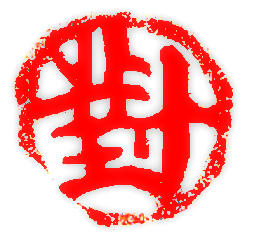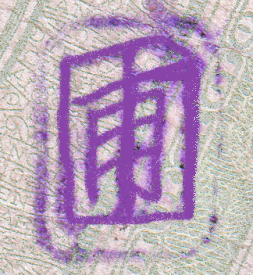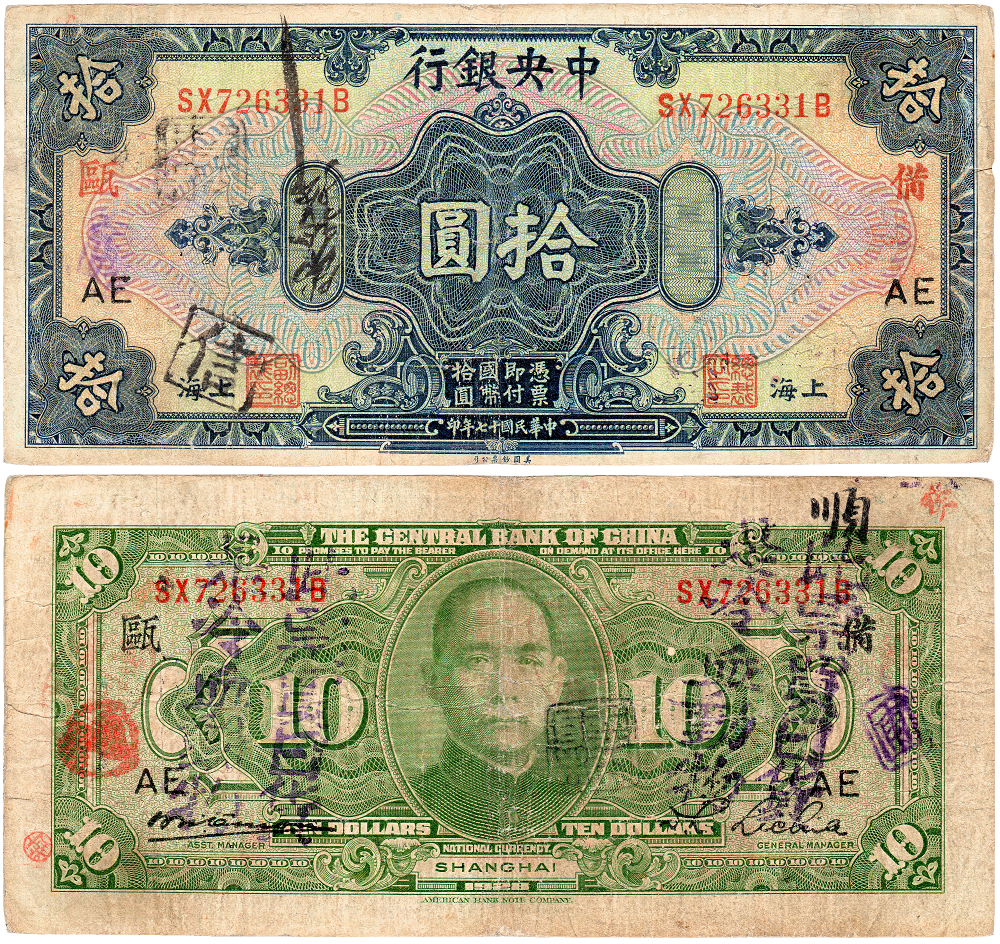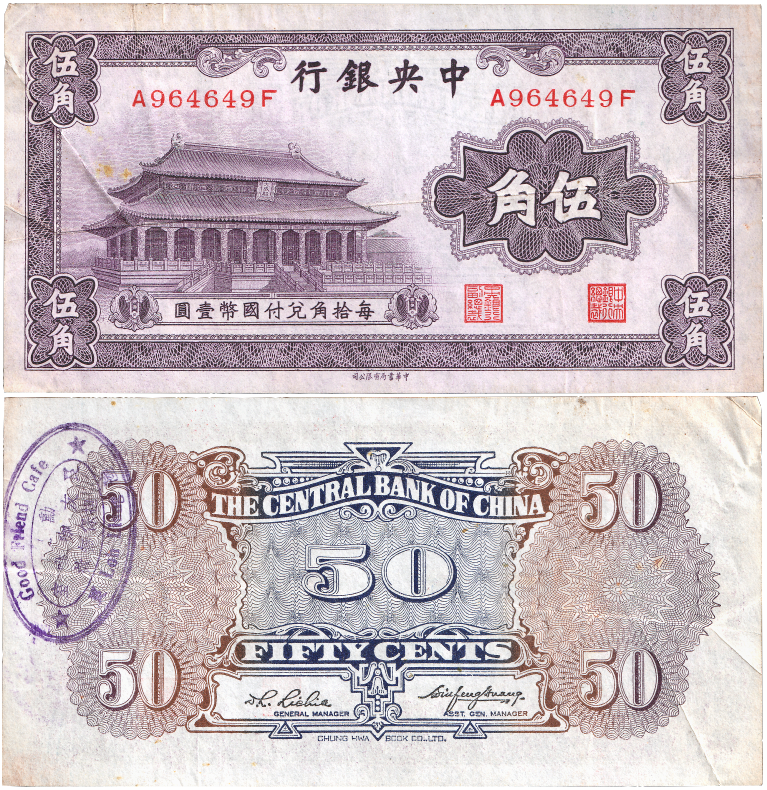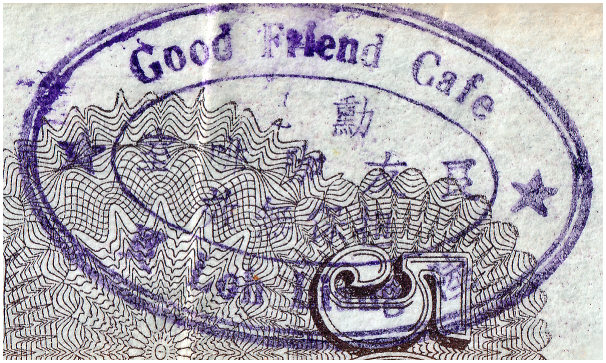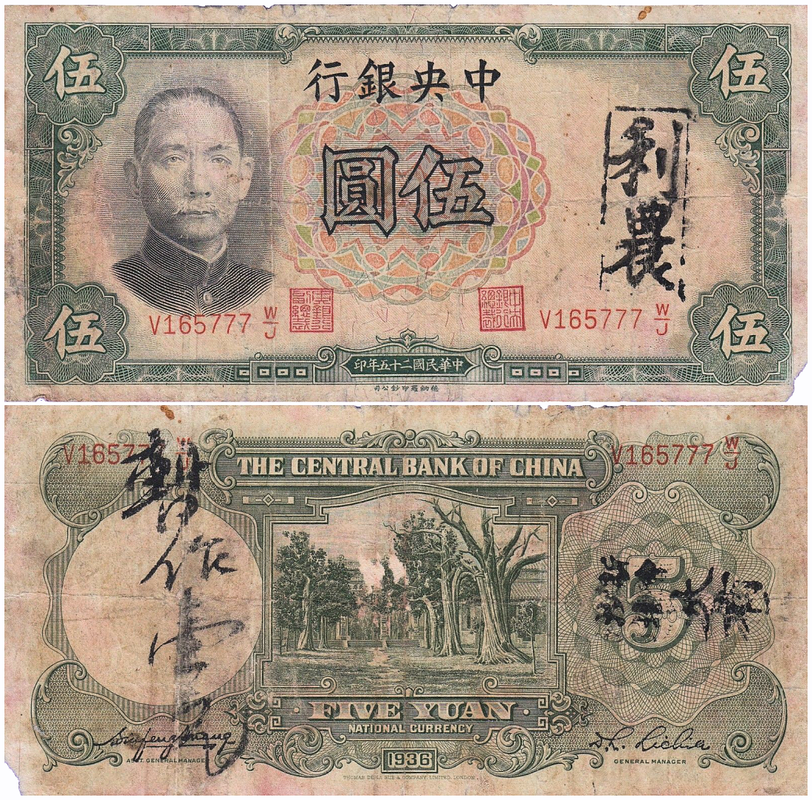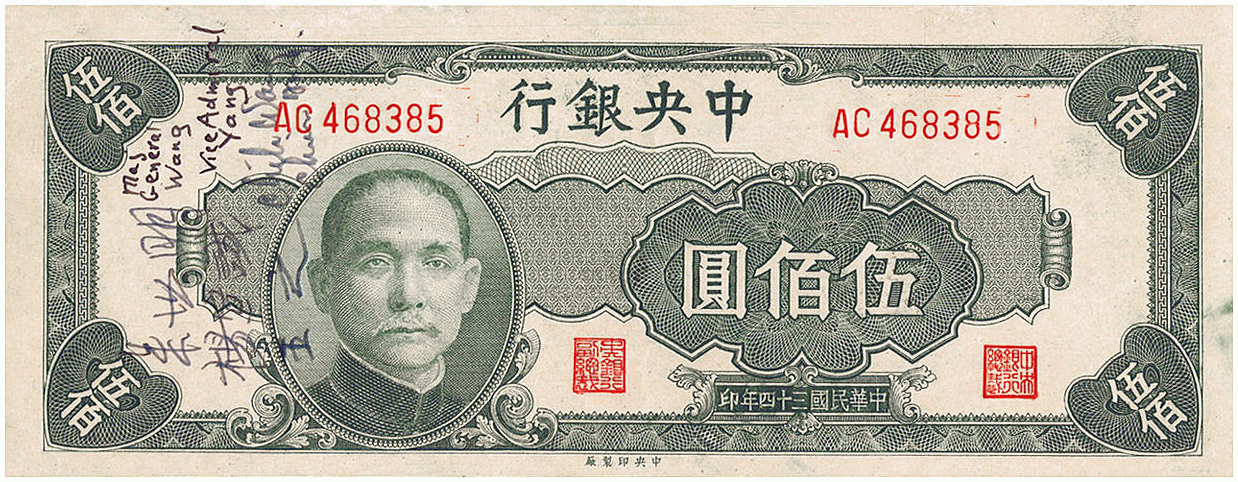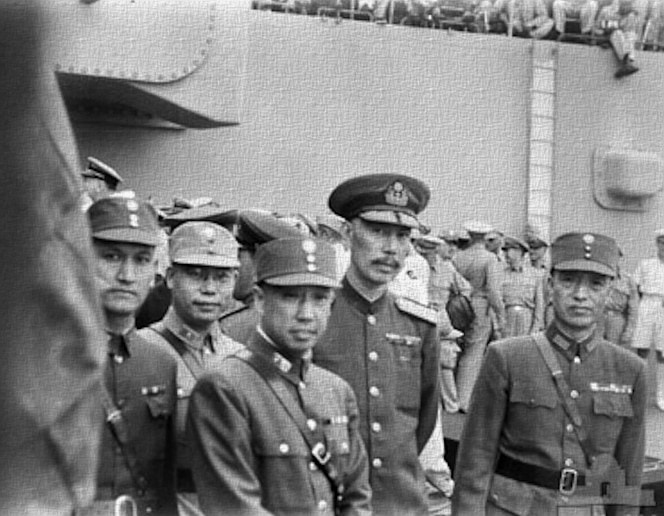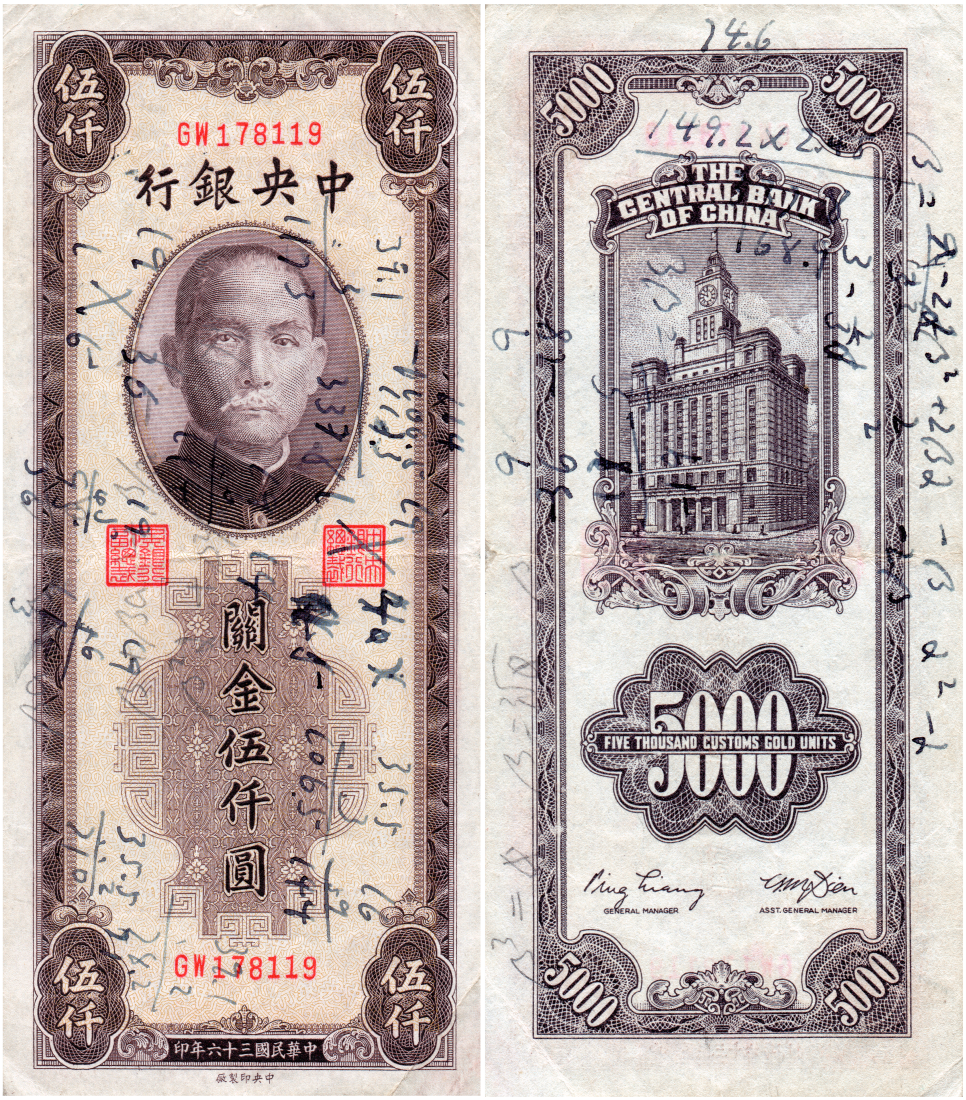|
June 10 2020
|
Script, Scrawl and Chops
A study of various examples of unofficial additions to paper money, usually in the form of various written scripts, signatures or chops (seals) and rubber stamps. These vary considerably in form and purpose, from the relatively banal, to the historically significant. Some have no relation to the use as money whatsoever.
This will be an expanding study. The examples are listed by issuer; bank or type.
This will be an expanding study. The examples are listed by issuer; bank or type.
The Central Bank of China - 中央銀行
|
Right: Central Bank of China $10 of 1928 (and issued c1928), SCWPM 197b, S/M C300-42b. This note has a multitude of offical and unofficial overprints, chops and annotations. The distinct black chop on the front (lower left) contains the single character: 信 'trust, believe, true'. This may be a reference to the name of the business the note passed through, or merely a declaration of the authenticity of the note. There is also a three character business name written, upside-down, in the left cartouche. |
Above: two of the many chops (enhanced) which appear on the back; both contain a single character. The purple chop appears to contain the character 圃, meaning 'garden or orchard'. The red chop character is yet to be indentified; this small chop is located in the lower left margin.
More noticeable is the repeated twin columns of rubber stamped text which appear at left and right in purple; right column: 此 (this, these), 票 (ticket, banknote), 買 (buy, purchase, bribe), 日 (day, sun, Japan), 貨 (goods, money, commodity). Left column: 是 (yes, correct), 冷 (cold, cool, lonely), 血 (blood), 動 (act, move, change), 物 (thing, substance, creature).
Altogether: 此票買日貨是冷血動物 (This ticket to buy Japanese goods is a cold-blooded animal). Clearly not a good translation via Google, however this is a anti-Japanese slogan which presumably is accusing anyone of using the note to pay for Japanese goods of being callous, cruel and unemotional - a cold blooded animal!
More noticeable is the repeated twin columns of rubber stamped text which appear at left and right in purple; right column: 此 (this, these), 票 (ticket, banknote), 買 (buy, purchase, bribe), 日 (day, sun, Japan), 貨 (goods, money, commodity). Left column: 是 (yes, correct), 冷 (cold, cool, lonely), 血 (blood), 動 (act, move, change), 物 (thing, substance, creature).
Altogether: 此票買日貨是冷血動物 (This ticket to buy Japanese goods is a cold-blooded animal). Clearly not a good translation via Google, however this is a anti-Japanese slogan which presumably is accusing anyone of using the note to pay for Japanese goods of being callous, cruel and unemotional - a cold blooded animal!
|
Right: Central Bank of China 50 cents, undated (c1936), SCWPM 205, S/M C300-24. This has a nice albeit frustrating English/Chinese chop/stamp on the back for a "Good Friend Cafe, Loh Liang" The Chinese appears to include: 室啡咖友良 Liangyou (Good friend/companion) Cafe 保坦?, and 良陸 (possibly Luliang, a place in Yunnan)? The only mention I can find anywhere is for a presumably indentical stamp (described without photo) which has the same English text on a 1 yuan also of the Central Bank of China, of 1936. Despite the Luliang (probably out of context), this cafe was obviously somewhere with a large and regular number of English speakers, so inevitably one of the former treaty ports or colonies. |
|
Right: The Central Bank of China 500 yuan of 1945, SCWPM 284, S/M C300-240. An interesting example with a series of Chinese signatures and later annotations identifying these. They are of Major General Wang Zhi of the Chinese Army and Vice Admiral Yang Xuancheng of the Chinese Navy, co-signers at the ceremony of the Japanese surrender to China in Nanking (Nanjing) on September 9th 1945. |
